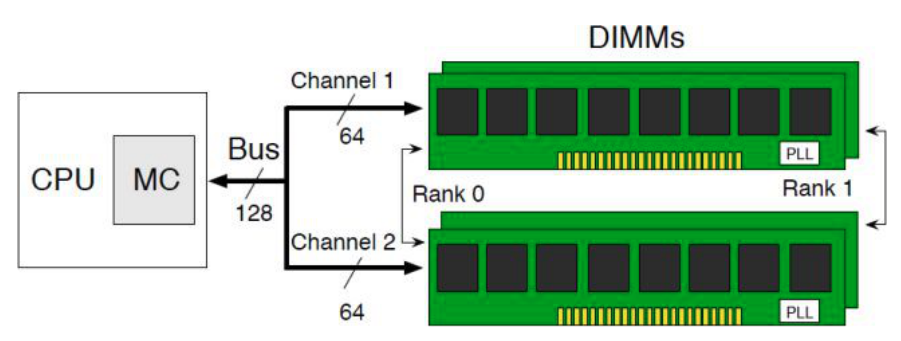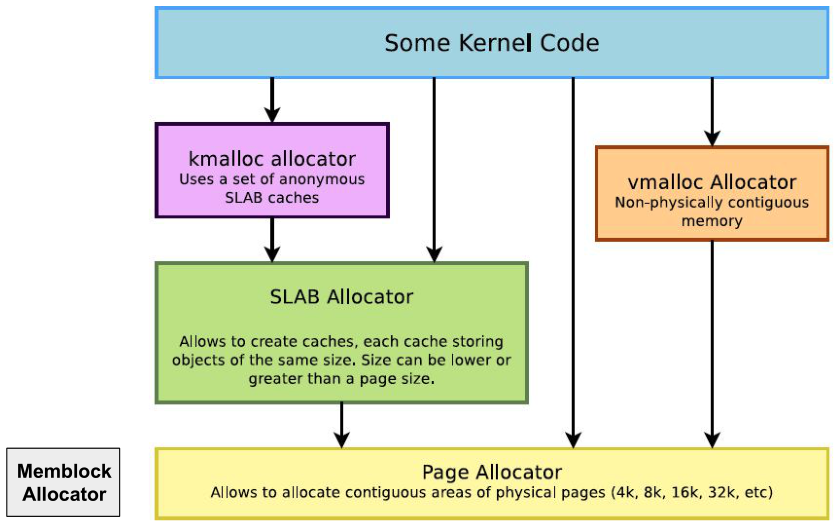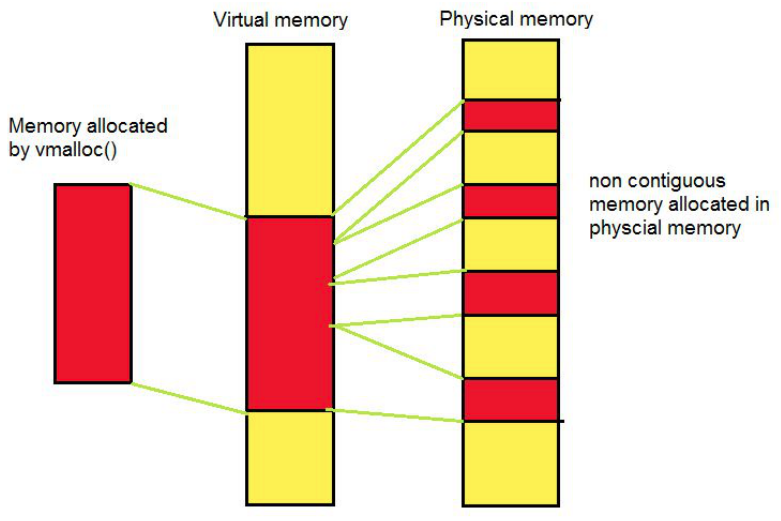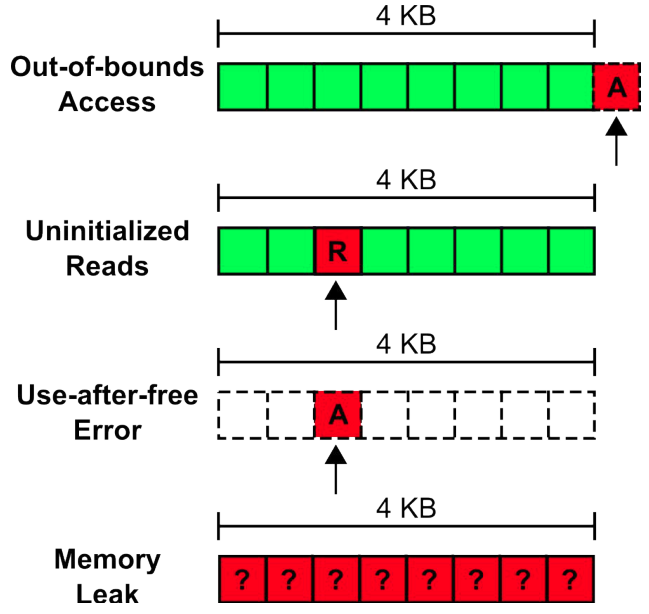Advanced OS
Table of Contents
Managing physical memory
Basic data structures
Physical memory – DRAM (Dynamic random access memory)
- memory cells with 1-bit data
- each cell has 1 capacitor + 1 transistor
- charge/discharge capacitor == 1/0 bit value
- capacitors leak charge → need periodic refresh (difference with SRAM)
- organized in: channels, DIMMs, ranks, chips, banks, rows/

- NUMA: each CPU package has own memory, can access memory of others with some latency
Managing physical memory on Linux
- logically divided in number of consecutive physical memory pages (page frames)
- identified by page frame numbers (PFNs)
- frames organized in
- nodes - “banks”
- zones - tagged regions for each node
- when under memory pressure, zone boundaries become “blurry”
- watermarking strategy to free pages (kswapd): WMARK_MIN (trigger direct reclaim), WMARK_LOW (trigger async reclaim), WMARK_HIGH (stop reclaiming)
- pages - physical page frames per zone
- 4KB units of physical memory
Allocating memory

Memblock allocator
- early boot-time (low mem) allocator
- replaces old bootmem allocator
- mostly used to initialize buddy allocator, discarded after initialization
- consists of two arrays:
- memory: all present memory in system
- reserved: allocated memory ranges
- allocates by finding regions in
memory && !reserved
Implementation:
- setup:
- add all available physical memory regions to memory
- add reserved ones to reserved
- all regions sorted by base address
- allocation:
- first-fit
memory && !reserved - just add the range to reserved
- merge neighboring regions as necessary
- first-fit
- deallocation:
- linear scan in reserved for containing region
- remove the range from reserved
- split region if necessary
Buddy/zone allocator
- “power-of-two allocator with free coalescing”
- blocks arranged in 2ᴺ (N=order) pages
- allocations satisfied by exact N
- if not possible, split larger 2ᴺ⁺¹ block to 2×2ᴺ
- two smaller blocks are ‘buddies’
- if not possible, split larger 2ᴺ⁺² block twice, etc
- deallocations return block to allocator
- if buddy free, coalesce into larger block
- if larger block’s buddy free, coalesce again, etc.
Implementation:
- for each node and zone, array of MAX_ORDER freelists
- freelist N maintains free blocks size 2ᴺ
- split/merge moves block(s) to previous/next freelist
- PG_buddy, order in page attributes (set if free)
- buddy operations: reserve (update page flags), lookup (flip ‘order’ bit in block address)

Fragmentation
External fragmentation:
- can’t allocate because of too many small free blocks
- addressed via
-
free coalescing
-
vmalloc allocator for large allocations
- first-fit, similar to memblock
- to allocate size N: allocate N page frames, map page frames in virtually continuous buffer

-
Internal fragmentation
- wasted because because large block assigned to smaller allocation(s)
- addressed via slab allocators
- for small allocations
- many implementations
- memory allocated from per-object-size caches (typical range 8 B to 8 KB)
- allocated memory physically contiguous
Memory errors in frame allocation

Sanity checks done by Linux (CONFIG_DEBUG_PAGEALLOC macro):
- out-of-bounds detection
- with page guarding: function
page_is_guard, bracket allocated page with guard pages. but can only detect out-of-bounds access in those limits. used by Linux - alternative, page canaries: stick a special value on each side of the allocated page
- with page guarding: function
- use-after-free detection
- page remapping: (function
kernel_map_pages, when the allocator frees the object, unmap corresponding page frames from virtual memory) - alternative, page poisoning: function
kernel_poison_pages, poison the page with some value when deallocated
- page remapping: (function
check_new_page: semantic checks on page descriptorfree_pages: invalid free detection
Object-level sanitizers: kmemcheck (uninitialized reads), kmemleak (memory leaks), kasan (out-of-bounds and use-after-free)